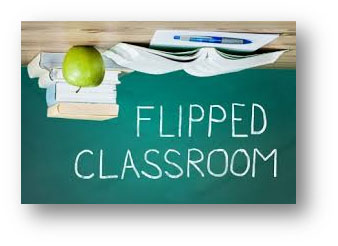Redesign of Teaching and Learning in Flipped Classroom
by Angel Lu and Dr. Crusher Wong

Flipped classroom approach has attracted a lot of attention because of its strong theoretical basis of learning enhancement ,(Bergmann, 20111). Brame (2013)2 suggested that a flipped classroom model encourages higher cognitive learning activities to be carried out during class time, while leaving the basic cognitive levels such as understanding as a pre-class task. The benefits of flipping classes are beyond active and constructive learning, consolidating knowledge, the best antidote to instructor boredom, and many more awaiting for educators’ discovery.
When it comes to adoption of flipped classroom approach, educators and learners need to be aware of both the benefits and hazards. Challenges may arise when students fail to prepare well before their classes or when learners feel frustrated to learn by themselves. Educators inevitably have to put more effort into motivating passive learners by integrating out-of-class activities into the classroom. The emergence of new technologies can aid the implementation but unstable tools may also deter educators from flipping their classes. To free educators from their concern of facilitating flipped classroom, the Office of Chief Information Officer (OCIO) will be here to provide necessary support and resources to overcome such challenges in the adoption of e-learning technologies.
To further strengthen the support to teachers who would like to adopt innovative pedagogies, CityU has collaborated with four other local tertiary institutions, namely The Chinese University of Hong Kong, Hong Kong Baptist University, The Polytechnic University of Hong Kong and The Education University of Hong Kong, under a UGC-funded project titled “Effective Implementation of the Flipped Classroom Approach in Hong Kong Higher Education for Enhanced Learning Outcome”. This cross-university project intends to consolidate successful experience from early flipped classroom adopters. The comprehensive blueprint acts as a reference for educators to implement flipped classroom from the preliminary phase to the final evaluation stage. Each institution will contribute their expertise in different key components, i.e. Exposure, Incentive, Assess and Activities, suggested by Brame (2013) for the flipped classroom implementation.
In this UGC-funded project, CityU will be in charge of the area of Exposure, which will focus on providing training and resources to support teachers to make the most effective learning materials. A Learning Material Development Archive has been compiled based on solid experience of the successful introduction of Massive Online Open Courses (MOOCs) and prolonged support of flipped classroom on campus. Educators are expected to find rich technical and pedagogical tips to facilitate their own video-based materials from the archive. Moreover, a formative evaluation consultation panel supervised by CityU will be established to provide reviews and comments on the video quality and instructional design of the video-based materials.
Aligned with the UGC-project, the OCIO is determined to flip classes in CityU. Several courses, ranging from Gateway Education study of societies to Year 4-level environmental impact assessment, are in the pipeline to start their flipping journey. Throughout the process, the OCIO has provided necessary pedagogical support and recommendations of the latest e-learning technologies to educators successively. It is exciting to see that several courses are pioneering the application of Virtual Reality (VR) along with follow-up activities online and offline to bridge the gap between pre-class and in-class learning.
With the advancement of mobile gadgets, more flipped classroom showcases are expected to come. If you are interested to bring flipping concepts to your class or if you would like to share your insights on the development of flipped classroom, don’t hesitate to contact the e-Learning Team (elearn@cityu.edu.hk or 3442-6727).
References
- Bergmann, J. (2011, December 7). The Flipped Class Revisited. Retrieved February 27, 2018, from Flipped Learning Simplified with Jon Bergmann: http://www.jonbergmann.com/the-flipped-class-revisited/
- Brame, C. (2013). Flipping the classroom. Retrieved February 27, 2018, from Vanderbilt University Center for Teaching: https://cft.vanderbilt.edu/guides-sub-pages/flipping-the-classroom/